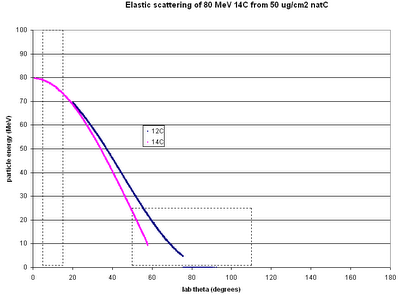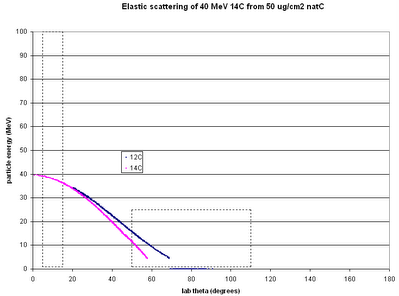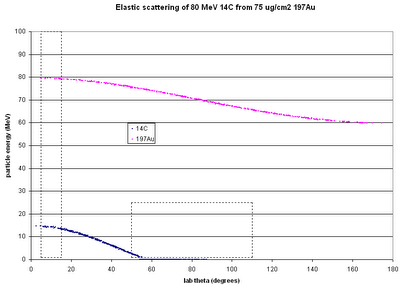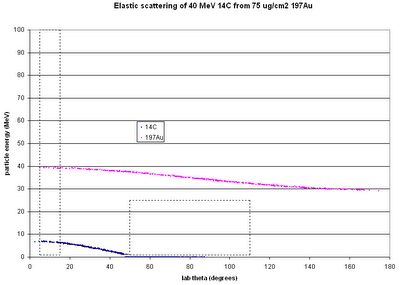
40 MeV 14C on carbon

80 MeV 14C on gold

40 MeV 14C on gold

These simulations include energy loss/straggling in the target and dead layer, along with the detector's energy resolution.
Bottom line: the gold runs should provide well-separated lines in det 1 and nothing at all in quad (so ignore it; no requirements at all on goodness-of-events in the quad), while the carbon events should be coincidences between det 1 and quad--maybe initial energy calibration of det 1?
No comments:
Post a Comment